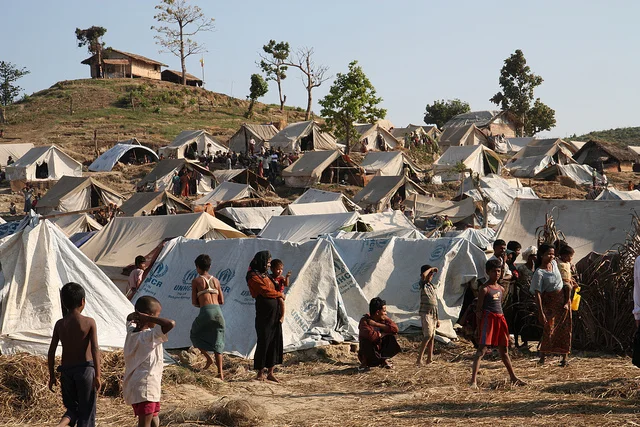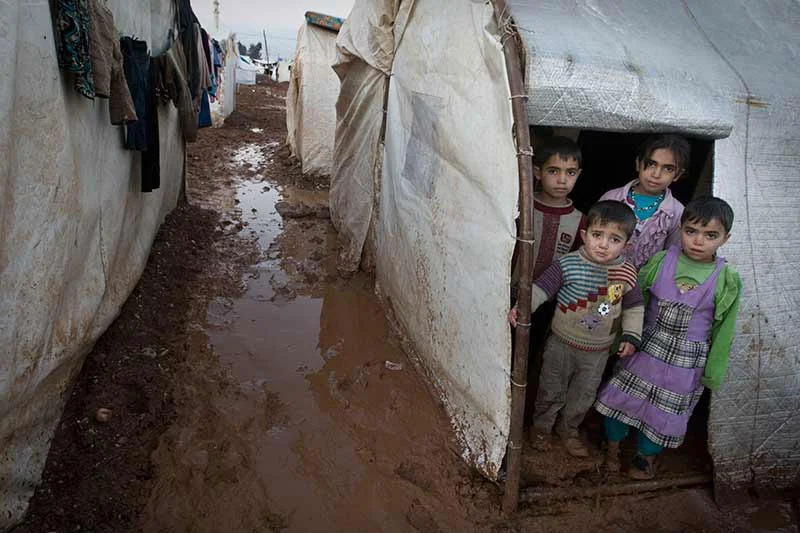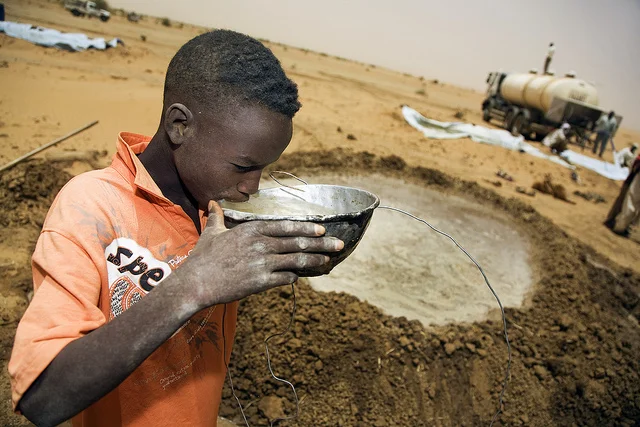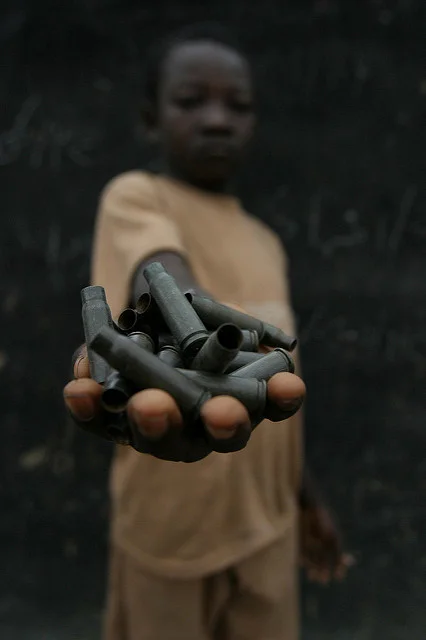I first had the rude awakening that children are used as soldiers, sex slaves, cooks, spies, and involved in the atrocities of war when I was about fourteen years old. This realization happened when a group of twenty-something guys came to my middle school and talked about their experience travelling to Uganda which later become a film known as Invisible Children.
A year later, a boy who escaped the Second Sudanese War named Alepho came to my school and told his story. Along with his brother and cousin they fled Sudan, risking their lives to cross Ethiopia and before making it to a refugee camp in Kenya. They were later taken into a program called the “Lost boys of Sudan” and resettled in the US. Alepho was eventually able to go to school and write a book, They Poured Fire on US From the Sky, sharing his story with the world.
Both of these stories, through film and literature shaped my understanding of war, forcing me to not only imagine but comprehend the reality that thousands of children in the world grow up -and all too often are forced to take part- in conflict. Why am I reflecting on this experience today?
February 12 is Child Soldier Awareness Day also known as Red Hand Day. A day dedicated to ending the use of child soldiers. And a day to tell the world that over 250,000 children are currently serving in one way or another in armed militias, and even recruited by governments in some regions across the globe. Because everyone has a role to play in protecting the world’s children.
In 2004, groups in 22 countries used children in “armed hostilities,” and the governments of 17 countries used children or backed militia groups using children in armed conflict. In 2013, the UN launched an effort to end child soldiers by 2016. And today, the number of countries using child soldiers is down to about 12.
The number of child soldiers has declined but the method in which child soldiers are being used, and the places militias keep children, are harder and harder to find and document.
Progress has been made, but there are still far too many conflicts that place children at great risk for becoming child soldiers, and countries where children still work in armed conflict. Here are just some of the places all over the world that still use child soldiers.
1) Democratic Republic of Congo (DRC)
After 30,000 child soldiers were abducted from their homes in Uganda over several decades and coerced into joining the Lord’s Resistance Army (LRA) the leader of the guerilla war group moved into remote regions in the DRC and parts of Sudan. It’s also not just boys who are recruited into war, an estimated 30 percent of children used in conflict are girls.
2) Mexico
Anywhere with an unstable government, conflict, poverty and lack of access to education for children, poses a great risk for children to be exploited. Currently, this is the case with Mexico. In the video above, a 14 year old boy is arrested for drug crimes involved with the cartels in Mexico City.
Check out this TED talk to better understand how insanely complex global illegal markets, and the business strategy of drug cartel’s operating from Latin America. In this TED Talk Rodrigo Canales describes the business tactics of the drug cartel and their recruitment strategy. He explains that the cartels offer benefits, local services, and protection to families and it’s not hard to understand how children and minors can easily be swayed into joining the cartel when other opportunities are not available.
3) Myanmar

Just one year ago Tatmadaw Kyi, Myanmar’s army, continued to recruit child soldiers. With Nobel Peace Prize recipient Aung San Suu Kyi as the new (defacto) leader of the country, global citizens can hope for a more peaceful year and an end to ongoing conflict and exploitation of children in Myanmar.
4) Syria

The ongoing civil war in Syria has contributed to children becoming snipers and suicide bombers for rebel groups. A report from Human Rights Watch (HRW) in 2014 shows some of the horrors children in Syria go through--proving the necessity for more education opportunities and safe havens for vulnerable refugees. You can learn more from 25 Syrian child soldiers who shared their stories with HRW here.
5) Central African Republic

The UN estimates that over 6,000 child soldiers are involved in conflict in the Central African Republic (CAR). In 2014, UNICEF worked to release over 2,800 children who were used as child soldiers in the country. But as poverty continues it creates a vulnerable situation where families have children who may see joining a militia as the only viable economic option.
6) Sudan and South Sudan

In 2004 there was an estimated 17,000 child soldiers in government forces and allied armies. Eleven years later, there are still between 15,000 and 16,000 child soldiers who have been recruited into the conflict.
7) Colombia
The Netflix series Narcos explores -and to some extent glamorizes- the rise of the cocaine industry and drug cartels under Pablo Escobar in Colombia. Jump ahead several decades and Colombia is still torn with conflict and exploitation. In Colombia, the national army is reported to use child soldiers as spies to collect information. In the gangs and various armed groups, some as young as 7 years-old are forced to kill family and friends to prove their loyalty as this boy recalls.
This puts enormous strain, and anxiety on children. Armed opposition groups also use child soldiers in conflict, but recently FARC (Revolutionary Armed Forces of Colombia—People's Army) vowed to stop recruiting fighters under the age of 17.
The use of child soldiers is still a global problem. Exploitation of children in war will not be ended until extreme poverty is ended and children have better opportunities than being captured, coerced or voluntarily entering into conflict.
The stories and experiences of those who have gone through war, been victims of conflict are heartbreaking, and it can be frustrating to not see an end to a practice that no matter what your background, religion, or political position you can agree should be stopped.
So what can you do today?
Take a picture of your red hand and share it with the world to let everyone know you are committed to the world ending the use of child soldiers. It’s every global citizens’ responsibility to end any type of involvement of children in war.
Let’s build a world where children are all in school, and spend their days safe, playing with family and friends not living or seeking refuge from conflict, or engaging in aspects of war.